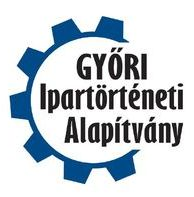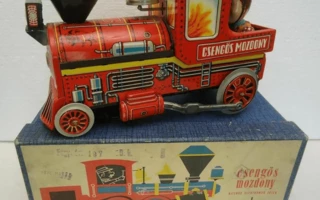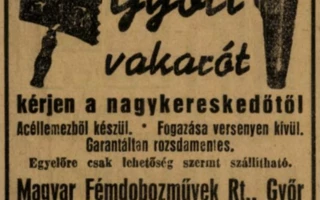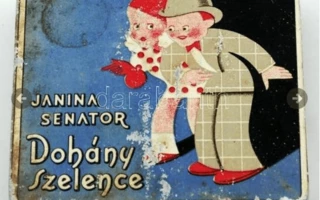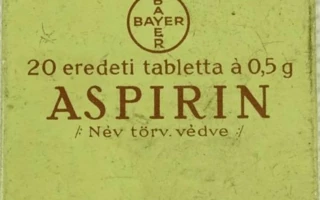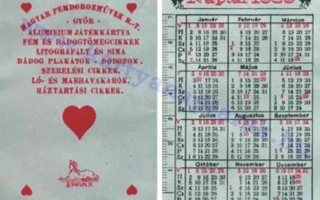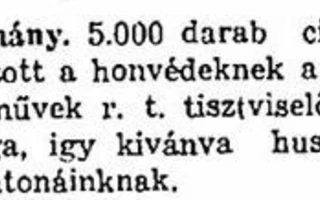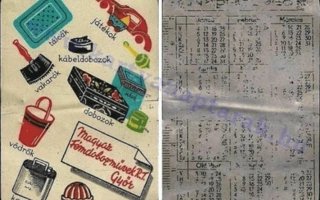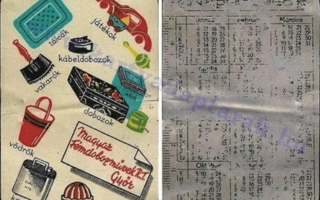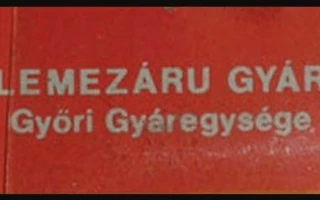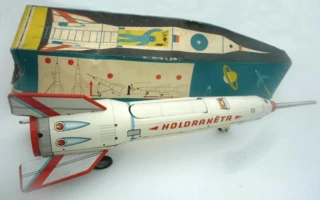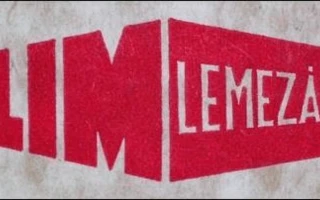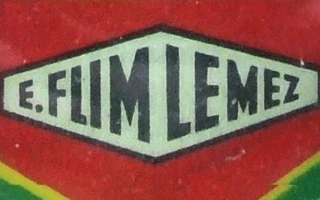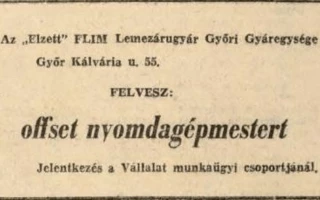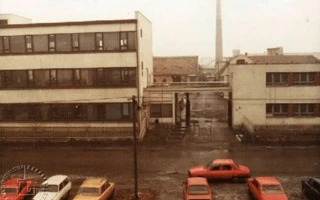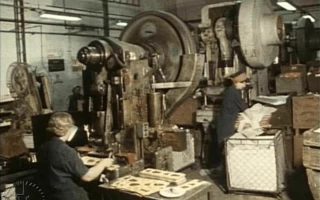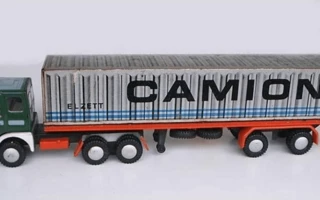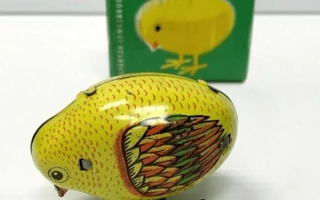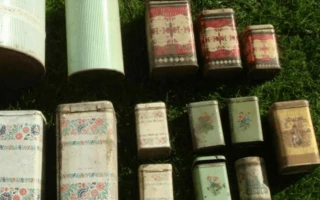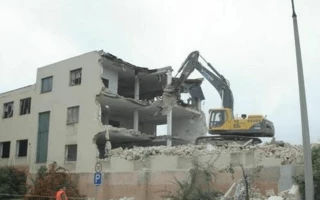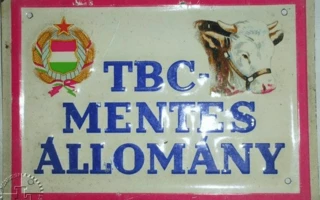Contact details
Foundation for Industrial History of Győr
Szent István út 10/a
Phone:
+3696520274
Fax: +3696520291
E-mail:
ipartortenet@ipartortenet.hu
Map
Sheet metal factory
| Address of the memorial site, route planning | ||
| What can we see at the memorial site? | ||
| Brief overview | ||
| Detailed company history | ||
| Interesting facts | ||
| Literature, references | ||
| Related gallery |
| MEMORIAL SITE ADDRESS, ROUTE PLANNING |
| WHAT CAN WE SEE AT THE MEMORIAL SITE? |
Street view:
A picture from the past:

The entrance to the Győr Factory of the ELZETT Sheet Metal Works. Kálvária Street 55. 1970.
Source: Fortepan
| BRIEF OVERVIEW |
|
Despite its many name variations, or perhaps because of this, the older generation of Győr people simply refer to the Hungarian Metal Box Works Co. as a box factory or a sheet metal factory. The factory, which was established on the site of a match factory, has been producing metal cans and sheet metal linings since 1921. Under the management of Miksa Schönfelder, the factory developed into a prosperous production unit within ten years despite initial economic difficulties. Its products included tin posters, car and house number plates, reflective prisms, plain and lithographed tin cans for pharmaceutical and chemical purposes, oil cans, bazaar goods and toys. The factory, which suffered significant damage during the war, became the Győr site of the Metal Box and Tube Works after nationalization. On May 1, 1954, the Győr plant was also transferred to the Sheet Metal Works, and in 1965 it was named ELZETT Metal Sheet Metal Works Győri Gyára. In 1991, the company was transformed into Polimetal Győri Tómegcikkgyártó Részvénytársaság, which was closed in 1993. Its buildings were demolished in 2008. |
||
| DETAILED COMPANY HISTORY |

An emblematic product, the bell locomotive.
Source: http://lemezarugyarjatekai.hu/CSENG-S-MOZDONY/s-l1600hf.jpg#breadcrumb
The Hungarian Metal Box Works was established on the site of the former match factory.
On September 20, 1918, Szikra Magyar Gyújtógyárak Rt., a group of Hungarian factories that included Vesuvius Magyar Gyufagýár Rt. and its Győr factory, sold the Győr plant to Magyar Zománc és Fémáru Rt. The joint-stock company wanted to establish a metal can factory on the Győr plant. After the purchase, the plant remained empty for years. In 1921, the Magyar Fémdobozművek Rt. Győr factory was already producing sheet metal liners and cans, and its long-term director was Dresden-born Miksa Schönfelder.

Miksa Schönfelder, mechanical engineer, director of Magyar Fémdobozművek Rt.
Source of the image: Győr city and Győr-Moson-Pozsony county administrative divisions. Edited by József Palatinus, Imre Halász. Győr, 1931. p. 211.
Miksa Schönfelder graduated as a mechanical engineer from the technical college in Chemnitz. He initially worked as a mechanical engineer, then worked in the sheet metal processing industry, designing machines and equipment. During the First World War, he worked at the Turn-Teplitz (now Teplice) factory of the “Austria” Austrian Enamel and Metalware Works. When the Győr factory of the Hungarian Metal Box Works was founded, he was entrusted with the equipment and commissioning of the factory, in addition to being appointed director. Despite the initial economic difficulties, Schönfelder developed the factory into a prosperous production unit within ten years.
The November 2, 1932 issue of Honi Ipar reports on the new products the Győr factory was set up to produce. In addition to producing tin posters, car and house number plates, reflective prisms, plain and lithographed tin cans for pharmaceutical and chemical purposes, oil cans, paint cans, bazaar and toy goods, and aluminum playing cards, they also began producing textile spinning reels, radio components, and electrical assembly items.
The company, which was still mainly engaged in the production of metal boxes, began producing new industrial products in 1934 to employ its 150 employees. They hoped for a large turnover from the production of patented cattle and horse scratching posts.

Hungarian Iron Merchant, December 23, 1944, No. 42, p. 8.
The company's innovation was children's toys made of sheet metal. Strollers, kitchen utensils, and bushings were marketed in national colors. They also produced tobacco boxes.

Image source:
After the Győr company of the Hungarian Metal Can Works Co. Ltd. also became a member of the metal can cartel, it successfully pushed for an increase in the price of metal cans, which resulted in a product price increase of about 10 percent, which the pharmaceutical industry resented in 1937.


Metal medicine boxes
In the pre-war years, they worked with 160 machines and 170 workers, producing and shipping hundreds of thousands of boxes abroad every week.
The best market for the products was Calcutta, but they were also shipped to Turkey, Brazil, Egypt, and South America.

The card calendar of the Hungarian Metal Box Works Co., Győr for the year 1939
Source: Old Hungarian card calendars
http://kartyanaptarak.hu/displayimage.php?album=146&pid=8019#top_display_media

Győr National Newspaper, March 25, 1942, No. 69, p. 4.
Source:https://edok.gyorikonyvtar.hu

Győr National Newspaper, April 13, 1944, No. 82, p. 5.
It was on this very day that the first Anglo-Saxon bombing attack hit Győr.
Source:https://edok.gyorikonyvtar.hu
The factory suffered significant damage during the war, which the Germans used as a warehouse, and then took the most valuable machines and materials when they withdrew. After 1945, the initially ownerless workers later received three directors at once, but not the raw materials, coal, or work clothes necessary to start work.
In 1947, a locksmith designed toy cars to produce thousands of small cars for Christmas. In 1948, 67 people worked in the factory, with the same poor working conditions. In addition to the production of less popular traditional tin products, they gradually switched to making toys (cars, crocodiles, strollers).

The card calendar of the Hungarian Metal Box Works Co., Győr for the year 1948
Source: Old Hungarian card calendars http://kartyanaptarak.hu/displayimage.php?album=793&pid=4255#top_display_media
After nationalization, the factory became the Győr site of Fémdoboz és Tubus Művek.
After the Ministry of Metallurgy and Machine Industry designated the Budapest Sheet Metal Works as the base company for toy production, the Győr plant was also transferred to the Sheet Metal Works on May 1, 1954. At that time, metal packaging (cans, boxes) and various toys, mainly bazaar toys, were produced in Győr. 134 people worked in the Győr plant in poor conditions. The more than 30-year-old neglected buildings had no changing rooms, washrooms, dining rooms, toilets, the transmission solution in the workshops, the low voltage, was unknown, some workshops had to be moved in the attic, and there were no paved roads.
The article "Above Life Level" published in the October 3, 1956 issue of the Győr-Sopron County Newspaper mentions the Győr company as the Metal Box and Tubus Works box factory, where the 200 employees produce baby swings at a price of 1 forint 80 fillies, and produce mechanical vans in six different colors.
In the 1950s, the bathhouse and changing room were completed at the Győr camp. The dining room was converted into offices, and the workshop was expanded and modernized with the construction of the so-called "bridge of sighs". The central heating network was modernized at a cost of half a million.

Company logo
Source: http://lemezarugyarjatekai.hu/C-GLOG-K/l_gyor.jpg#breadcrumb
On January 1, 1959, the Sheet Metal Factory, together with its Győr plant, was merged into the Metal Sheet Industry Works, which was formed from the merger of eight factories.
In the early 1960s, a gas-fired burning oven, essential for printing works, was completed at the Győr site of the Metal Sheet Works. The demand for bazaar games decreased, and in order to use the freed capacity, the production of mechanical games was transferred from Budapest to Győr. The number of employees at the Győr site was already 220 at that time, and in order to better meet social needs, a new changing room and bath were completed in 1964.

The legendary product of the 1960s was the moon rocket. It moved horizontally when the rocket's tip hit, rose to a vertical position, and even the cabin door opened.
Source: http://lemezarugyarjatekai.hu/HOLDRAK-TA/hold_fe_xx.jpg#breadcrumb
In 1965, the production of tool boxes was introduced at the Győr plant — at that time, no company in Hungary was engaged in the production of this product —, which also entailed the reorganization of the workshops in Győr. This reorganization increased the plan of the Győr plant by 10 million HUF. They were mainly manufactured for export, the boxes were filled with tools at the parent company in Pest. In 1965, the Győr factory had 241 people. It produced 43 million HUF. In the same year, the ELZETT Ironworks was also attached to the Metal Sheet Works, from then on the name became ELZETT Metal Sheet Works Győri Gyára.

Company logo
Source: http://lemezarugyarjatekai.hu/C-GLOG-K/elzett100.jpg#breadcrumb
In 1971, on the fiftieth anniversary of its existence, the Sheet Metal Factory was granted the rank of a plant unit and became the Győr plant unit of the ELZETT Sheet Metal Works (FLIM) Sheet Metal Factory.

Metal tray. Limited edition for the 50th anniversary.
Source: http://lemezarugyarjatekai.hu/HASZN-LATI-T-RGYAK/talca.jpg#breadcrumb


Company logos
Source: http://lemezarugyarjatekai.hu/C-GLOG-K/logo_98.jpg#breadcrumb
http://lemezarugyarjatekai.hu/C-GLOG-K/e_flim_nagyjpg.jpg#breadcrumb

Ad
Workers' Newspaper, July 4, 1972, No. 155, p. 4.
In 1977, the factory already had six hundred employees, the electrical network was renovated, new transportation routes were built, and new production machines were purchased. Thanks to the development, the factory doubled its production, with an annual production value of 178 million forints at the time. Despite this, the efficient production of the plant was questioned, as the factory did not have modern machinery. The possible closure of the factory was also on the agenda.

The entrance to the factory. 1978.
Source: http://lemezarugyarjatekai.hu/LEMEZ-RUGY-RM-SK-PP/Gyori_jatekgyar.jpg#breadcrumb
Meanwhile, the reorganization of Hungarian toy production began, which involved modernization, upgrading, and the cessation of production of certain products. The reorganization was supported by the economic management with several million forints, from which the Győr site also benefited.

Moon car, 1978
Source: http://lemezarugyarjatekai.hu/HOLDAUT-/32awonwx.jpg#breadcrumb
In 1978, the Győr company established a remote “toy factory” in the community center in Gyömören, providing work opportunities for 34 mothers with young children. The parts of the shunting locomotives and bushings, which were shipped from Győr, were assembled on workbenches.

Gyömörei outsourced assembly department.
Source of the image: Erzsébet Nagy: Győr's True Tales and Poetic Confessions. Fates, Stories. Győr, 2014. p. 109.
https://edok.gyorikonyvtar.hu/results/-/results/e68013cb-6579-4ceb-b69d-307389abb721/solr#displayResult
In 1979, thanks to the competent ministries, ELZETT's Győr factory was included in the list of companies designated for development, receiving 40 million forints for this purpose.

Remote control mini racing car on the production line
Source: http://lemezarugyarjatekai.hu/LEMEZ-RUGY-RM-SK-PP/lemez_koz.jpg#breadcrumb

Remote control mini racing car
Source: http://lemezarugyarjatekai.hu/albums/MINI-AUT-VERSENY/mini_a_02.jpg

Assembly line, 1978.
Source: http://lemezarugyarjatekai.hu/LEMEZ-RUGY-RM-SK-PP/flipper.jpg#breadcrumb

Record pressing, 1978.
Source: http://lemezarugyarjatekai.hu/LEMEZ-RUGY-RM-SK-PP/taxi_02.jpg#breadcrumb
Thanks to the modernization and the internal design team, more and more sophisticated and imaginative toys were released from the factory. Among the new products, the truck family, which was produced as a true-to-size scaled-down version of the Rába trucks , became a great success:

The first Rába truck was launched on the market in 1980.
Source: http://lemezarugyarjatekai.hu/R-BA-CAMIONOK-I./raba_Con_zo_04.jpg#breadcrumb
After the Rába toy trucks, which were very popular among children, a toy version of the Ford Lotus Formula 1 racing car was completed. The elements of the 50 cm long, scale-based car were such that children or adults with a passion for modeling could build an electric or low-power internal combustion engine into it with some modifications, but it could also be equipped with a radio-controlled engine.

Ford
Source: http://lemezarugyarjatekai.hu/SPEED-AUT-CSAL-D/speed_33.jpg#breadcrumb
In 1982, the Sheet Metal Factory, together with the Győr factory unit, separated from Elzett Művek and became an independent company again. The company produced about 50-60 types of lithographed toys. The flywheel-powered "Dwarf Car", the "Momentum" motorcycle and the wind-up squeaky chick are still well-known today.

Pecking chick
Source: http://lemezarugyarjatekai.hu/CSIPEGET-CSIBE/-_70.jpg#breadcrumb
In 1983, the free production capacity was tied up with the introduction of a new product, the production of kitchen box sets. A quarter of the cylindrical and rectangular boxes, suitable for storing flour, sugar, tea, salt and other cooking supplies, were sold in the Finnish, Swedish, Dutch and West German markets.

Kitchen storage boxes
After the self-developed Pyramid logic game, the electric-powered model of the Rába-Steiger tractor and the “ Go-Start ” car family were also launched . Although these products were good sellers, they did not generate a profit after their production.
In 1985, under a cooperation agreement with one of the world's most famous toy manufacturers, the German company Märklin, they produced various metal assemblies for Märklin metal construction sets. They began assembling toy trains, producing parts and building blocks, and the foreign partner provided the machines, tools and drawings necessary for production and assembly. The factory's well-known, in-house developed toys ceased production.
In 1991, the company was transformed into Polimetal Győri Tömegcikkgyártó Részvénytársaság, and then privatized in 1995. In 2008, the former factory buildings were also demolished.

The buildings of the sheet metal factory are being demolished. September 16, 2008. Photo: Attila Stuksza
Source: https://www.kisalfold.hu/helyi-ertek/tudosito/bontjak-a-lemezarugyarat-1450477/
See also:
Adrienn Lengyel: The Győr Sheet Metal Factory. The former stronghold of metal toys. In: Győr Szalon, City History Puzzle 13. https://www.gyoriszalon.hu/index.php?mact=News,cntnt01,detail,0&cntnt01articleid=2778
| INTERESTING FACTS |
|
An old company logo Source: http://lemezarugyarjatekai.hu/HASZN-LATI-T-RGYAK/tbc.jpg#breadcrumb
Did you know that the famous ELZETT factory had roots in Győr? A factory in Győr gave the large company the name Elzett, which was born from the initial letters of the name of the factory founder Zoltán László and its German pronunciation. (LZ Elzett.) The factory, founded in 1919, has developed into one of the most significant lock and padlock factories in the world over the past decades. Its products were known all over the world.
The factory founder and namesake is Zoltán László. Imre Tóth: The history of the Elzett factory. In: Studies from the past of Budapest 19. p. 435.
On April 8, 1919, Zoltán László, a locksmith and mechanic, submitted an application to the Győr Council. He requested a permit to operate a small business, and he proved his eligibility with 10 service certificates and a letter of assistance. He received the industrial permit on April 22, 1919, and opened his workshop at Árpád út 93 in Győr. In the fall of 1919, he already employed a few assistants, primarily undertaking repair work, but they also made furniture locks. The introduction of furniture lock production required the factory to break through the previous small-business framework and take on a factory character. László purchased two additional neighboring plots of land on Árpád út, and had workshops and a warehouse built. The city court of registration registered the new factory on February 17, 1922. The name: László Zoltán Metal and Bulk Goods Factory, Győr, Árpád út 93—97. The company's business scope: large-scale production and marketing of all kinds of metal goods and bulk metal goods. The factory then adopted the name Elzett and used a circle as its logo, with an "L" above a diagonally placed key and a "Z" below it. In the summer of 1922, the factory ceased production of all its previous products, with the exception of mousetraps, and only kept furniture locks and fittings in its program. On July 1, 1929, the then silent partner, Ernő Kallós — with whom Zoltán László was a double brother-in-law — established the Elzett Ironworks Limited Liability Company and appeared before the public as the company's president. In 1935, it was decided to move production to Budapest. The sales department, the central office, was already in the capital. For more information, see Imre Tóth: The History of the Elzett Factory. |
||
|
Name variations: Hungarian Metal Box Works Ltd., Győr 1920 – Győr location of Metal Box and Tube Works 1949 – Győr sheet metal factory May 1, 1954 – Győr Plant of Sheet Metal Works January 1, 1959 – ELZETT Sheet Metal Works Győr Factory 1965 – ELZETT Sheet Metal Works (FLIM) Győr plant 1971 – Győr sheet metal factory 1982– Polimetal Győr Mass Goods Manufacturing Co. Ltd. 1991. December 31. –1995 |
| LITERATURE |
- 1972. László Kotán: The History of the Sheet Metal Factory. Written by the then director on the occasion of the 100th anniversary of the Sheet Metal Factory. Source: Angyalföld Local History Collection.
Source: http://jatekmuzeum.mlap.hu/html/22444623/render
- 1972. Imre Tóth: The history of the Elzett factory.= Die Geschcichte der Fabrik ELZETT In. Studies from the past of Budapest 19. pp. 433-460.
- 2014. Erzsébet Nagy: True tales and poetic confessions from Győr. Fates, stories. Győr. 107-109. pp.
https://edok.gyorikonyvtar.hu/results/-/results/e68013cb-6579-4ceb-b69d-307389abb721/solr#displayResult
- Source: Adrienn Lengyel: The Győr Sheet Metal Factory. The former stronghold of metal toys. In. Győr Salon, City History Puzzle 13. https://www.gyoriszalon.hu/index.php?mact=News,cntnt01,detail,0&cntnt01articleid=2778
- Source: Lemezarugyarjatekai
http://lemezarugyarjatekai.hu/pages/C-gt-rt-net/
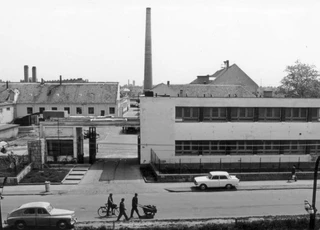
Related gallery
Back to the previous page!
